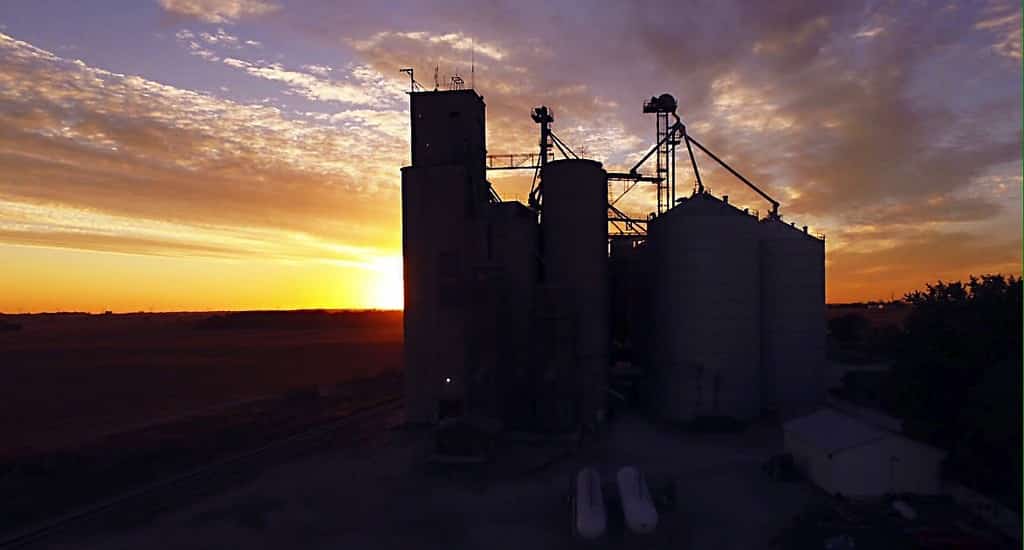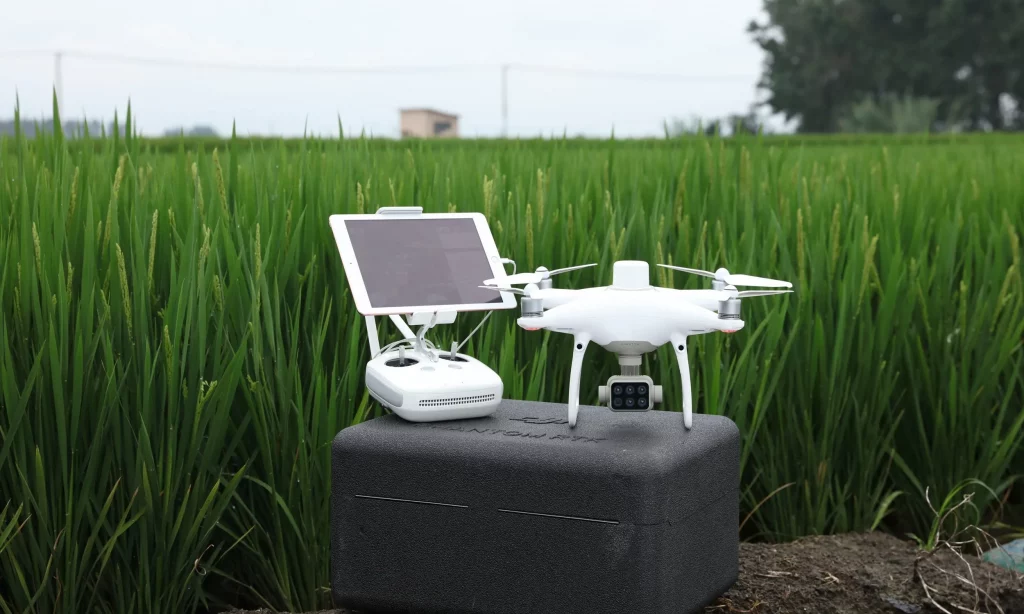Drones have had a wide variety of purposes in the last couple of years. They began as toys, and then started being used for military purposes. Soon Amazon and Walmart began testing their own versions of drones for package delivery services. Google has even jumped onboard to solve some of their problems.
There are many new package drone delivery businesses being formed, yet few have had the opportunity to add to their clientele yet. Some drone companies have tested medical and emergency delivery services in third world companies. It’s perhaps these flights that are more likely to be approved by the FAA—the governing body for flights in the USA. But drones are still allowed to be flown on private land, and for this reason, agriculture drone have begun to be used for agricultural purposes.
Drones can be more easily utilized than helicopters or planes. These traditional modes of travel are extremely expensive. Even during emergencies such as earthquakes, fires, and floods, it can be difficult to find volunteer pilots on demand. Plus, someone must still pay for the maintenance of the aircraft and the fuel it needs.
Drones are more like toys as they are compact in shape, yet when they are used in agriculture, they are far from being toys. There are some current drones that have been upgraded to make them work well for agriculture, while other drones have been specifically designed to work in agriculture.
Together with new technology, agricultural apps and software, they have been capturing the interest of farmers who are seeking a better solution to managing their crops.
Table Of Contents
- 1 How Drone Use in Agriculture Can Cut Costs
- 2 The Benefits of Drone Usage on Farms
- 3 Agriculture drone: 3D Robotics’s Drone for Agricultural Usage
- 4 New Advances in Drone Technology to Aid Agriculture
- 5 How Imaging Can Benefit Drone Agriculture
- 6 Drones Agriculture Software
- 7 Agriculture drone: Best Brands for Drone Agriculture
- 8 The Study of Drone Use in Agriculture
- 9 The Future of Agricultural Drones
How Drone Use in Agriculture Can Cut Costs
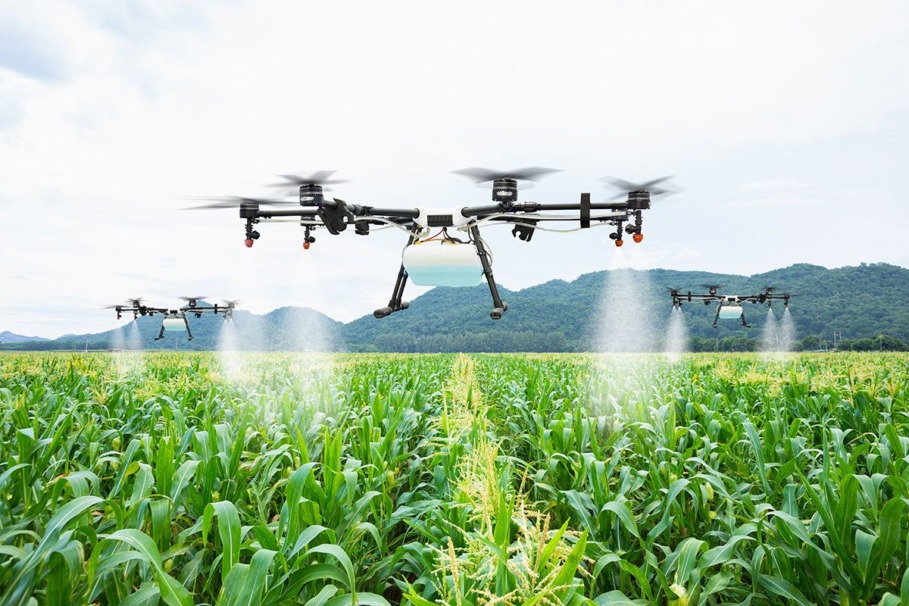
Drones can be used for a wide range of purposes in agriculture. Not only can a drone be flown over fields, they can be fitted out with a camera that can take snapshots or film video. These images can be scoured to see if there are any issues with the fruits, vegetables, plants, or even livestock. Imagine how traditionally a human would have to walk over the land to inspect it, or to use a vehicle. Not only can time now be saved, but costs on fuel cut down.
Drones can also be used to image the land, which can be expensive when hiring professional crop imagers to do the task. Images can be joined together to provide a complete picture.
Drones could also potentially spray pesticides or fertilizers over the land. This may be a more effective technique than doing it from the ground. It’s also a whole lot cheaper than sending a plane overhead. And, it can be more accurate, avoiding livestock, houses, and neighbour’s lands. These purposes haven’t been utilized yet, but their usage may be coming.
Farmers who own drones may even think of some other uses for them that have yet to be discovered.
The Benefits of Drone Usage on Farms
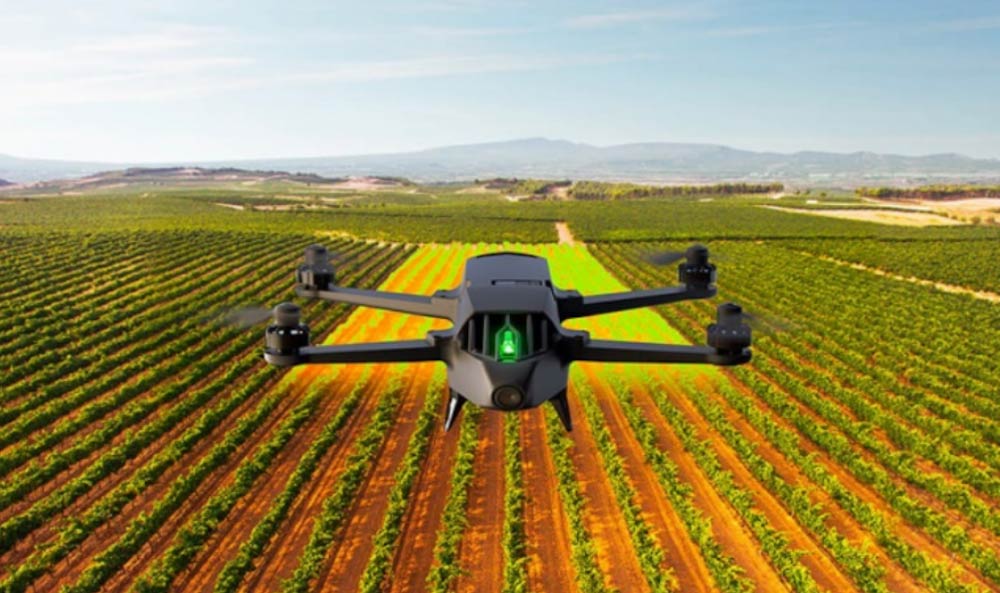
The drones that are used for agriculture are equipped with cameras and video cameras, as well as advanced sensors. They’re used to increase yields, and decrease crop damage. They are popularly used in the wine vineyards of Sonoma Valley, where a crop of grapes can yield profitable wine production. Some of these vintners offered their wines for over $50 a bottle.
It’s even most productive for the farmer, winemaker, etc. to actually learn how to fly drones and buy their own drones, rather than to hire a drone expert. Many of these drones need a radio controller and a pilot on the ground to operate. But there are some newer drones that can be pre-programmed to fly autonomously, so the farmer needs to only learn software and not how to be a pilot.
The most common type of drone used for agriculture is the quadcopter, though some miniature fixed wing planes and other multi-bladed drones have also been used. It’s essential that a field drone have built-in GPS.
After a drone camera has taken its shots, the shots can be stitched together with a software program on the computer. These shots can become a high-resolution aerial map.
Drone usage is also a lot cheaper than crop imaging being done with a regular manned aircraft. Apparently these costs can run in excess of $1000 per hour.
Agriculture drone: 3D Robotics’s Drone for Agricultural Usage
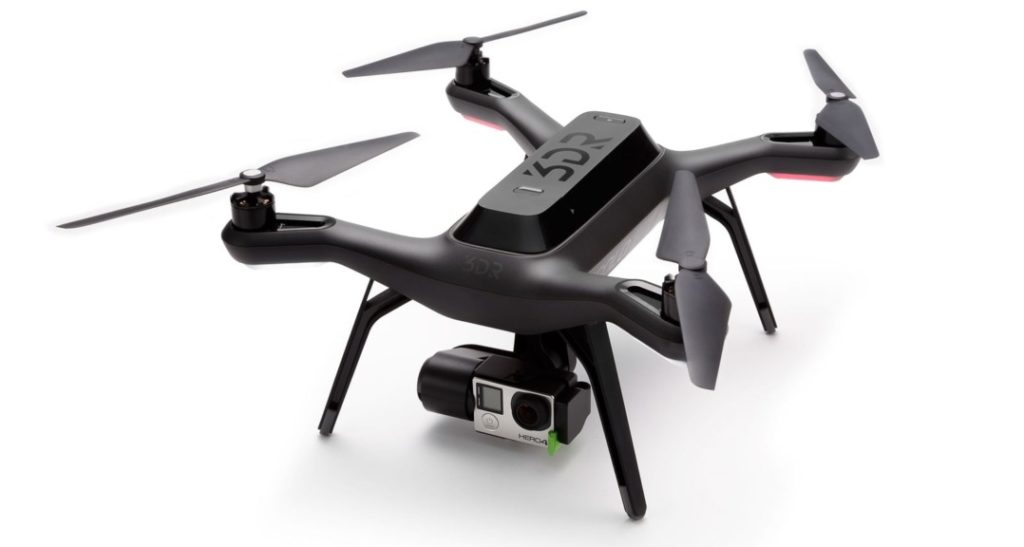
3D Robotics has the PrecisionHawk which has some great features. This drone is designed a lot like an airplane. But unlike a plane or a drone, it does not require a pilot to fly it.
To accomplish its tasks, the 3D Robotics drone does all the flying. It runs with software that you pre-program. You choose your flight path, and it will follow this route. You can aim for the maximum coverage of the land. The camera can also be programmed to take snapshots at regular intervals, or for when the video needs to turn on.
The drone can be used to plot a low flying flight path just above the crops, or further up, such as around 120 meters. This drone costs less than $1000, and is a one time buy, making it extremely affordable for the average farmer to buy.
New Advances in Drone Technology to Aid Agriculture
In the past, a toy drone could do little more than fly over a field and take snapshots and videos of the farmer’s crops. But now, new drones are being fitted with advanced technology. Drones may be built with tiny MEMS, which are sensors that can control the gyros, accelerometers, magnetometers, and also pressure sensors. It’s essential for these types of drones to contain GPS modules, and powerful processors, and digital radios.
Not only is drone technology getting better, but they’re also becoming more affordable, even when they’re loaded with all of this amazing new technology. Each component is getting better and more affordable. A lot of this is due to the advances in smart phones that often utilize the same types of technology.
There are also open-source programs that are created by drone communities. One of these is called DIY Drones. It offers an inexpensive way for drone manufacturers to use code, rather than purchasing expensive code from the aerospace industry.
And it’s not just drones that are benefiting agriculture, but all of the new automation and farm innovation too. Farmers can now grow more food with less labour. Tractors can plant seeds on their own. Harvesters are also unmanned and have built-in GPS systems that help them reap the crops within parameters. Wireless networks can analyze soil and other factors. You can imagine what they could accomplish if all the technology was designed to work together.
Together with drones used in agriculture, all of this technology will allow the farmer to create more crops more quickly.
How Imaging Can Benefit Drone Agriculture
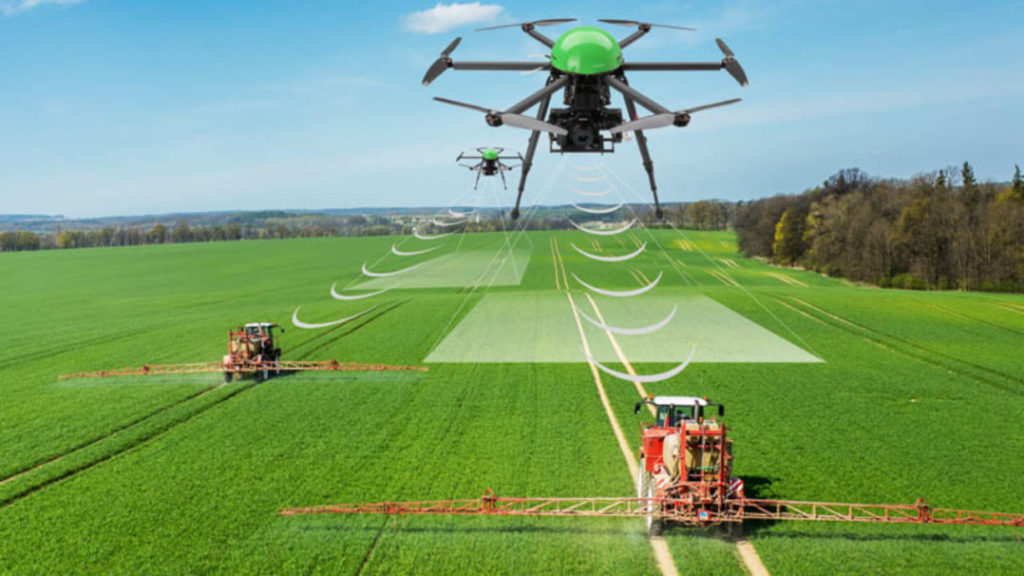
The images that agricultural drones take can show farmers at least three different types of detailed views. They can show crops from the air that can reveal problems. Certain patterns may emerge that will need to be carefully examined to decide if a solution needs to be found.
For example, a photograph may show irrigation problems, soil variations, pest infestations, or fungal infestations. Some of these problems may not be noticeable from the air, so it’s important to have this sky high level of view.
Drone cameras may also record multispectral images and collect data from both the infrared and the human’s visual spectrum. These images can be combined together. This will help to discern the differences between a healthy crop and a problematic one, and these images can show problems that may not be seen with the regular human eye.
The final way that a drone can be beneficial to a farmer is that a series of images of a crop can be taken every week. These images can be combined to create a time-lapse animation. This video may show changes in the crops, reveal problematic spots, or give the farmer ideas for better and more effective crop management.
Drones Agriculture Software
One drone software is called NDVI, which means Normalized Difference Vegetation Index. This software measures crop productivity. It uses calculations that are based on visible and infrared radiation. A camera first records this data, and then it gets saved in the Cloud for analysis later.
If a regular camera took a shot of the crops above it would merely show rows of crops. These masses can be undifferentiated. But with the infrared technology, it can bring forward the minute differences in colours. Now bright yellows, reds, greens, and oranges can now be seen on the screen. The software also has the capability to stitch together hundreds of different images to form the full picture. If a person did that on their own, it would be a full-time job, which would also cost the farmer a lot of money.
Agriculture drone: Best Brands for Drone Agriculture
3D Robotics’s PrecisionHawk is one drone that is used for drones agriculture, but there are many other brands also used. Agribotix has three different types of drones. There is the Agrion, the Enduro, and the Hornet. Obviously these drones are going to cost more money than if a farmer simply bought a drone from amazon.com. But if they’ve given a toy drone a try and are hoping to extend their capabilities, one of these three drones may work well for them.
Agriculture drone: Agrion
The Agrion looks a like the Phantom 3 line of drones and that’s because it is. The difference is that it’s fitted out with some additional agricultural tools. It is simple to use and is affordable. It may be one of the best drones for agriculture for when a farmer is just deciding to try this new tech.
This drone is white with the gold stripes, and has a camera hanging from the underside of the drone. The camera is equipped with infrared technology, which is a boost up from the standard camera that’s included with the DJI Phantom drone. It will capture excellent field images. As the images are captured, they will be stored automatically in the Cloud so there is no loss of images, nor will a drive become filled up before the farmer has completed their task.
The Phantom line is a great line of drones for even beginners to learn to fly. This is important for farmers, as they’re often too busy with farm activities to learn new things. The camera has a built-in FarmLens. This is a special lens made for agriculture.
Agribotix also has a great smart phone or tablet app. This provides a solution to analyzing agricultural data.
This farm drone costs under $3000 and also includes the camera, and the iPad mini tablet that can provide access to the Agribotix and Lightbridge apps. Training is also offered by Abribotix.
Agriculture drone: Enduro
The Enduro is a long range agricultural quadcopter. It’s significantly more expensive than the Phantom 3, and costs $12,000 US. It includes a plan for one free year of unlimited FarmLens analytics. This quad has been specifically built for agriculture. It has a camera and comes with a variety of accessories.
The Enduro offers precision take off and landing. It can cover over 160 acres of land on a single set of batteries. It’s easy to fly, recognizing that farmers have no time to learn how to use a drones for agriculture. It will autonomously launch, fly its mission, and then return back to the landing site again, all with minimal effort on the part of the farmer.
When the drone has landed, the images it has captured can be uploaded to a FarmLens data processing platform. It’ll take a few hours of waiting while the images are stitched together, and the data is processed. You can then view these vivid and bright images and analyze the data. This will allow the agricultural farmer to figure out how to provide solutions for their farm.
The Enduro kit comes with everything that the farmers needs to look after their crops.
Agriculture drone: Hornet
The Hornet is a white and lime green drone that looks a lot like a fighter plane. It’s been purpose-built and has fixed wings. This drone also costs $12,000 and includes a year of FarmLens data analytics. This drone is built with endurance in mind and has a kit with everything you need.
The Hornet is built with a streamlined intelligence solution that can help to identify areas of concern on the field. It will record reliable crop health maps and work with agricultural applications.
There are many farms around the world that use FarmLens. The image processing and analytic services included will save time and make farmers’ jobs much easier. They’ll no longer have to worry about tech hassles or hire costly data analyzers. It’s built with high-quality servos, wiring, and motors.
The Hornet has dual radios for telemetry and the controller. It has 8 rechargeable batteries for long distance. The camera is a GoPro Hero4 with an option to switch it up to a Hero4 Silver.
The Study of Drone Use in Agriculture
There have been two universities that have been studying how drones can improve agriculture. Carnegie Mellon, Purdue, Oregon State, and the Massachusetts Institute of Technology all are working toward improving this type of innovation. They are working to create aerial and ground-based aerial robotic technologies. This technology could help analyze potato fields, apples, and peach orchards by collecting soil and water samples.
The Future of Agricultural Drones
It’s estimated that agricultural drones could make up to eighty percent of the commercial drone market in the upcoming years. This will mean that they’ll figure out a way to spray crops. Better imaging will allow for better targeting of crops. Labour and water will both be able to be better utilized.
Farmers that offer organic produce may also find drone agriculture particularly useful as they must minimize toxic chemicals on crops, but still need to be aware of insect or other types of infestations. Drones that monitor for disease or drought would make farming much simpler.
Not only can drones save money, but they can also assist the farmer, and help the environment in the process. The guesswork will be taken out of spraying crops. If the images reveal that all is well, the farmer can save money.
Just like with toy drones or delivery drones, the technology for agricultural drones is rapidly changing and getting better. Over time, farmers should see agricultural drones become more affordable as the competition to make them increases. Drones will be able to stay in the air for longer, record better images, and be more durable.
New apps designed just for farmers will allow them to analyze the data and join the images together. It will be exciting to see what the drone makers create for the agricultural industry over the upcoming year. Soon drones will be a regular sight over the fields that they manage, and your food may start to taste better in the process.


